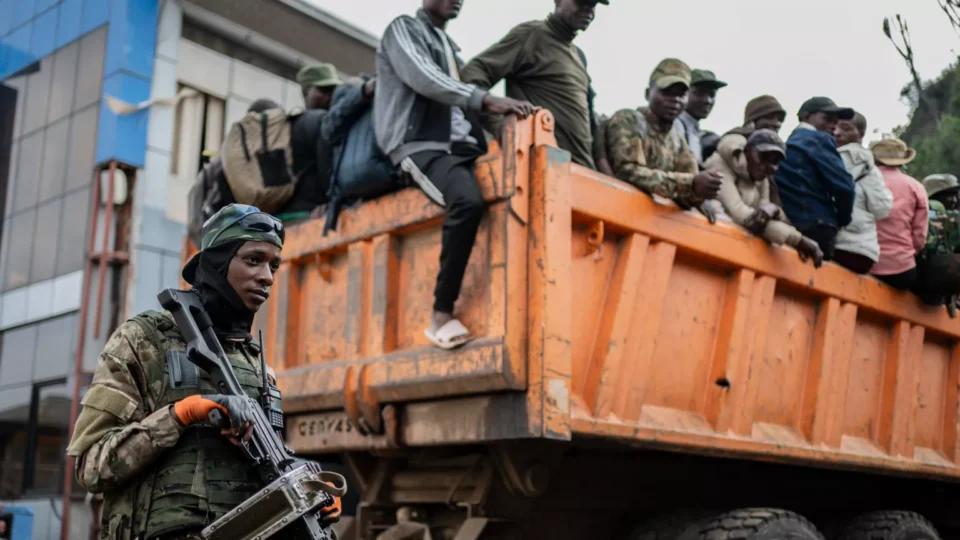
By Our Reporter
The eastern Democratic Republic of the Congo (DRC) is once again on the brink of collapse, as the deadly combination of the M23 rebellion and Islamic State-linked Allied Democratic Forces (ADF) creates one of the worst humanitarian and security crises in the region since the Second Congo War. A brutal attack on Saturday in the village of Munzinzi, South Kivu, where M23 rebels allegedly killed at least 17 civilians, is the latest grim episode in a widening arc of violence.
According to a statement by the Congolese army (FARDC), the M23 fighters stormed the village around 6:30 p.m., executing civilians and setting homes ablaze. The attack, officials say, was likely a retaliatory response to recent battlefield losses suffered by the rebels. Civilians fled en masse to nearby military outposts, a now-familiar pattern of displacement that underscores the worsening humanitarian crisis.
But this attack is just one piece in a much broader and more complex security breakdown.
Since the M23’s resurgence in December 2024, the group—allegedly backed by Rwanda—has taken control of vast swathes of North and South Kivu. Their northward march into areas historically plagued by the ADF has brought multiple armed actors into dangerously close proximity. Both M23 and ADF have escalated operations in 2025, with ACLED data recording over 2,500 conflict-related fatalities in just the first quarter of the year, making it the deadliest period since 2002.
The M23, a political-military movement with secessionist ambitions, has traditionally operated in the southern parts of North Kivu, while the ADF, linked to the Islamic State Central Africa Province (ISCAP), has concentrated on insurgency in the north. As the M23 advanced into Lubero territory, a known ADF stronghold, tensions surged. Despite United Nations Security Council (UNSC) reports that the M23 sought a non-aggression pact with the ADF to avoid mutual confrontation, the ADF reportedly refused any such agreement.
This overlapping geography has stretched FARDC forces thin, undermining their ability to respond effectively to either group. As troops prioritized the M23 frontlines, the ADF exploited the vacuum to launch devastating civilian attacks in the north, particularly in Lubero and Beni.
Unlike the M23, which seizes territory and sometimes attempts local governance, the ADF employs scorched-earth tactics—mass killings, looting, abductions, and destruction of entire communities. From January to March 2025, civilian deaths at the hands of the ADF surged by 68% over the previous quarter. Over 450 unarmed civilians were killed, including 70 massacred inside a church in Lubero on February 11.
The ADF’s ideology has shifted dramatically since its inception as a Ugandan rebel group in the 1990s. Under the leadership of Musa Baluku, the group has embraced Islamic State doctrine, posting brutal attack footage on IS-affiliated media channels and gaining both funding and technical support in return. In 2024, the ADF began experimenting with drone surveillance and attempted explosive attacks, revealing a dangerous evolution in its operational capabilities.
Ugandan military intelligence in March 2025 also raised concerns about a nascent alliance between the ADF and the Lendu-dominated CODECO militia—marking what could be the first significant ADF collaboration with another armed group since 2007.
Joint Congolese-Ugandan operations under Operation Shujaa, launched in 2021, have degraded ADF capacity over time by dismantling camps and disrupting leadership structures. However, the operation has struggled to prevent mass killings of civilians or fully neutralize the group’s mobility across Ituri and North Kivu.
In February 2025, Uganda deployed an additional 1,000 troops to the region, bringing the total number of Ugandan forces to around 5,000. Despite this escalation, ADF fighters have largely evaded direct military confrontations, instead relocating deeper into forested zones. In the first quarter of 2025, only five recorded battles involved the ADF, a steep decline from the 2024 average.
Meanwhile, the Congolese military has leaned heavily on local militias such as the Wazalendo, an umbrella of youth self-defense groups, to supplement its stretched forces. But this reliance comes with risks, as it may further fragment authority and introduce new actors with competing interests.
The convergence of the M23 and ADF threats, compounded by the FARDC’s divided focus and limited capacity, has pushed eastern DRC toward a new tipping point. The displacement of tens of thousands, the surge in civilian killings, and the erosion of state control are symptoms of a broader collapse of governance in the region.
UN agencies and humanitarian groups warn that unless regional and international efforts are scaled up significantly, the violence could spill across borders, with Uganda particularly concerned about renewed ADF incursions. Despite ceasefire talks between Rwanda and the DRC, violence on the ground continues unabated, with no clear path to peace.
In a region haunted by decades of conflict, the simultaneous offensives by M23 and ADF signal not just a security crisis—but the reawakening of a war machine that eastern Congo has never truly escaped.
